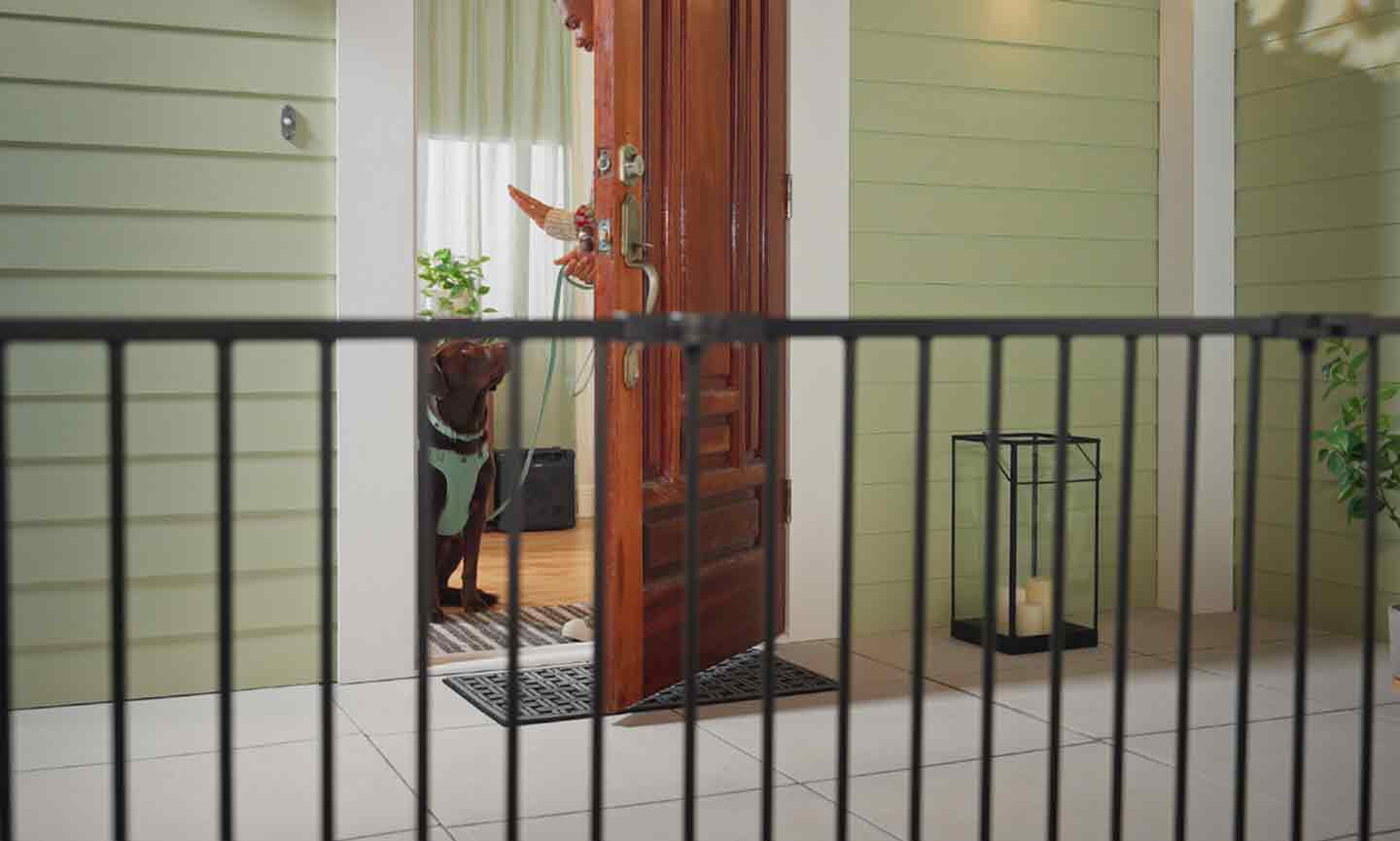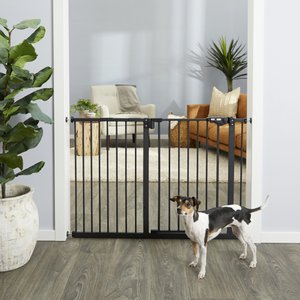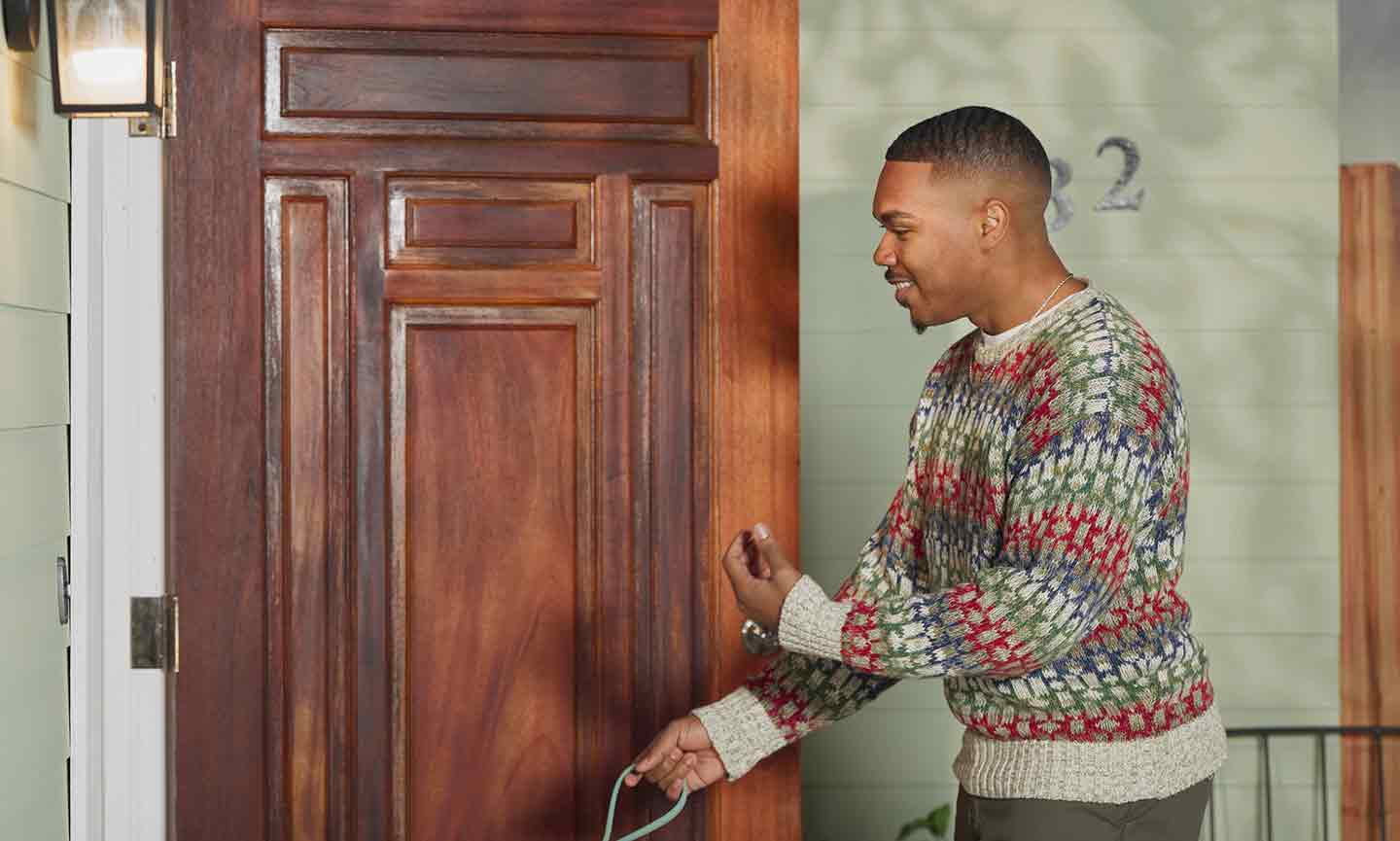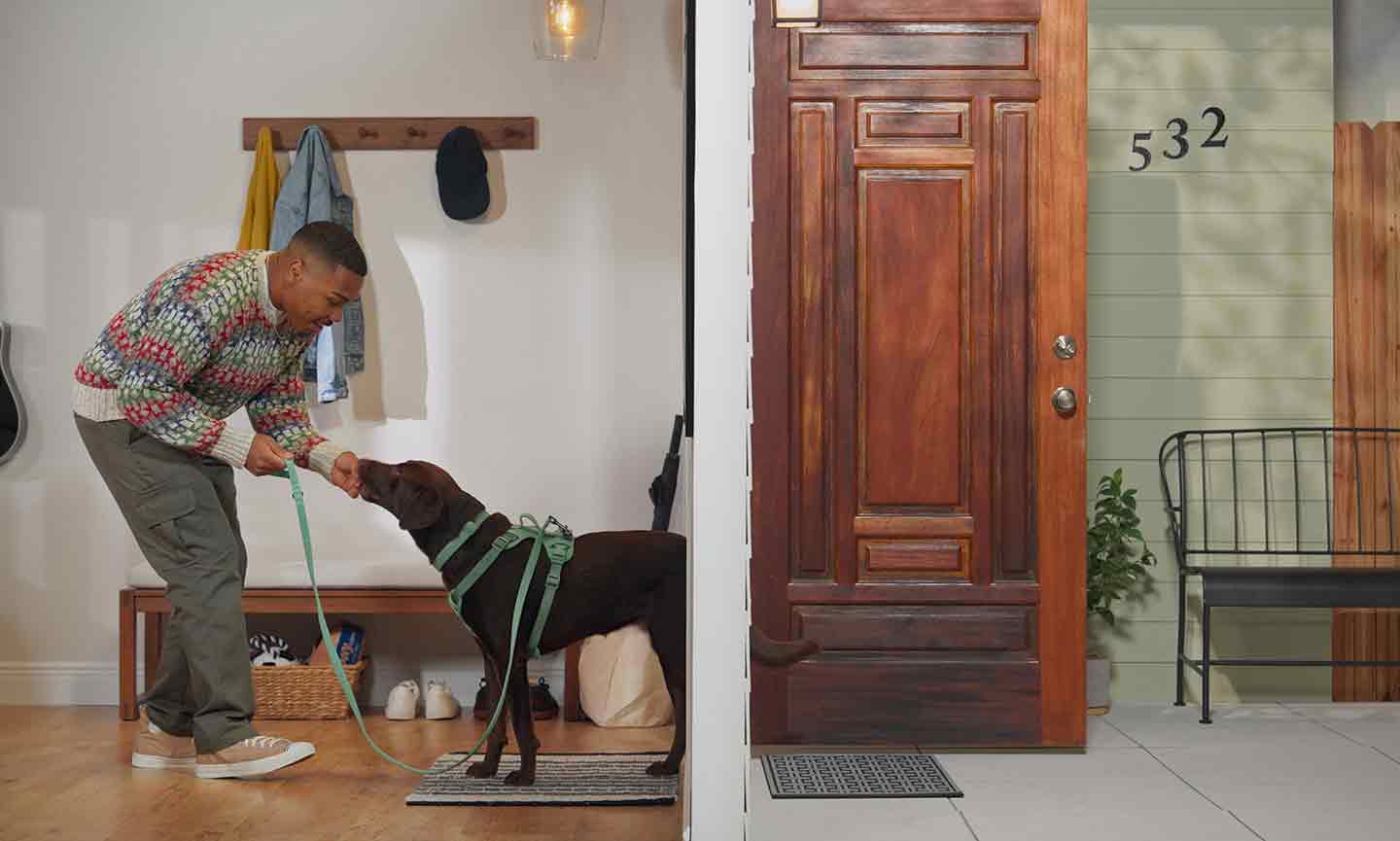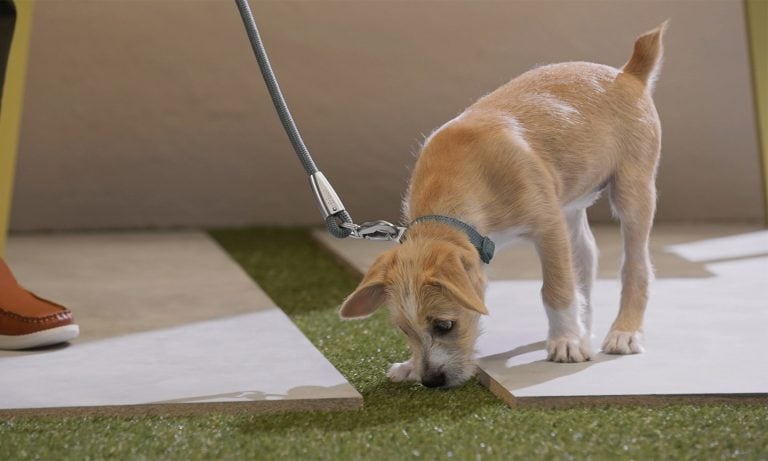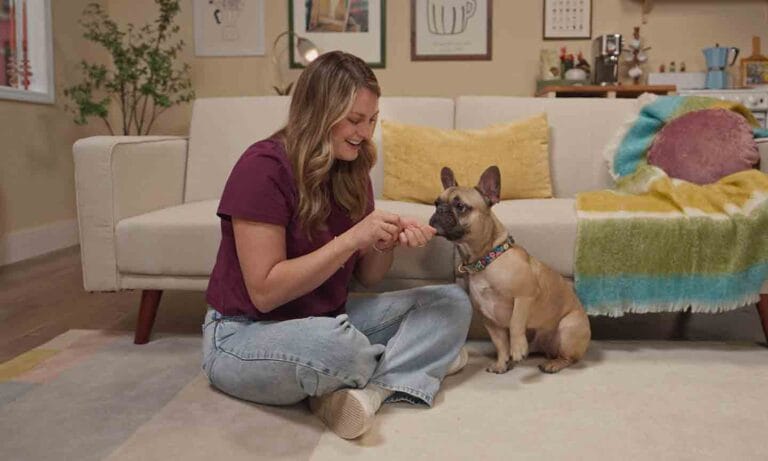You love your dog. And you’re pretty sure your dog loves you. There’s just one thing that makes you question it: the way they practically bum-rush the front door anytime anyone opens it. Why are they so desperate to get outside, and how do you stop dog door dashing when all your pet wants to do is run out?
We spoke to Alexandra Bassett, a certified professional dog trainer (CPDT-KA) and the owner, lead dog trainer and behavior consultant at virtual dog training company Dog Savvy in Los Angeles, all about this dog behavior, which is known as door darting.
In This Guide:
How To Stop Your Dog From Darting Out the Door
Dog dashing, or door darting, refers to the dog behavior of running out the front door or any open door. Here’s the good news: It doesn’t mean your dog is desperate to get away from you. According to Bassett, it’s a common behavior that can easily be remedied by training classes and training methods that teach off-leash dogs impulse control.
“Dog darting doesn't indicate serious behavioral issues,” Bassett says. “It just means that a dog hasn’t been trained to show self-control around thresholds yet.”
That’s right: To stop this behavior, your little escape artist simply needs to be taught that they need permission before they cross through a door, gate, or other entryway. Work through the below steps in 10-minute training sessions—or shorter for puppies who have shorter attention spans. The goal is to keep this training fun!
1Fence in Your Dog
Threshold training can take a while. In the meantime, adding barriers like dog gates and pens can help keep your dog safe.
These behavior management tools “make it easy to prevent a dog from running through an open door,” Bassett says. “They also make sure everyone stays safe while a dog is undergoing training.”
2Work on Basic Obedience Skills
To teach your dog not to dart out the door, they must first understand the basic training commands of “sit,” “stay” and recall, which means they come when called. Each of these verbal cues ensures your dog listens to commands. When your dog executes each command, use positive reinforcement with treats.
“Start your dog darting training by asking your dog for a sit, and rewarding them with praise and a treat when they do so,” Bassett says.
3Touch the Doorknob
Now it’s time to test your dog’s self-control. With your dog in a sit, simply touch the doorknob of any closed door they like to run through. If your dog stays in a sit, give them a treat and praise the heck out of them.
If not, try again. Have your dog sit in the same spot, and once again touch the doorknob.
Repeat this step until your dog can successfully hold a sit while they watch you reach for and touch the door handle.
4Open the Door
Now, follow the same process, but this time, try opening the door a crack. The same rules apply; put your dog in a sit, then ease the door open slightly. If your dog stays, they get more treats and praise. If they leave the sit, close the door and try again.
When your dog is staying with the door open just a crack, try opening it even wider. Gradually work up to a fully open door.
5 Walk Through the Door
Next, with your dog on a leash (and the loop end of the leash on your wrist to prevent door darting if they attempt it) try walking over the threshold. Repeat the same verbal cues, cross through the door, and provide positive reinforcement if your dog holds the sit. If they make a break for it, close the door and try again.
“You can also use a leash as a drag leash,” Bassett says, “meaning you clip the leash on and don’t hold it, but instead let it drag on the floor. Step on the leash if your dog attempts to bolt.”
6Call Your Dog to You
If your dog can sit patiently with you on the other side of the door, Bassett says, it’s time to use that recall command. Call your dog to you, then reward them—this time, Bassett says, with a walk.
7Call Your Dog Back Inside
The final step in training is teaching your pup to return inside immediately after they cross your door’s threshold—just in case they have a slip and find themselves on the wrong side of the door. To do this:
- Step out your front door and call your dog to you.
- When your dog comes to you, step back inside and call your dog again.
- When your dog comes back inside, give them several treats and praise to build value for returning inside.
- Take your dog for a walk.
What If My Dog’s Recall Is … Not Great?
If your dog is struggling with recall, Bassett has an additional trick: the positive interrupter game. This game hinges on a “positive interrupter” cue, like clapping, which signals to your dog that they are about to get treats.
“Hand clapping is the perfect positive interrupter because it’s an easy sound for a dog to pick out, and people have their hands”—as opposed to a whistle or clicker—“everywhere they go.”
To play the game, bring your dog indoors and have a bunch of your dog’s favorite high-value treats handy. Clap your hands, then drop several treats on the ground. Let your dog eat all the treats. Repeat this three to five times.
After multiple repetitions, your dog should start to make the connection that the clapping leads to treats. Then, take a two- to five-minute break to allow your dog to forget about all the treats and go back to relaxing.
Now, move to a different room and clap. If they come for treats, praise and drop a bunch on the ground. Take a two- to five-minute minute break again, then move to a different room and clap. If they come, praise and drop the treats.
Play this game daily or every other day to build a dog’s recognition of the cue (clapping) as meaning they will get a bunch of treats.
What Should I Do if My Dog Dashes Out the Door?
Your dog’s safety is the most important thing, so methods of preventing escape—like using barriers and perfecting their training commands—are key. Of course, accidents may still occur. Barrett offers this advice for pet parents when their dog gets loose:
- Don’t chase your dog. That can scare your dog, or they may interpret your chase as a fun game of tag.
- Entice them with treats. Use your pup’s fondness for dog treats to bring them back to you.
- Coax them with a favorite toy. The noise of a favorite squeaky toy, for example, could inspire them to return to you.
Why Does My Dog Keep Dashing Away?
The most likely reason is lack of training. “Dogs are naturally curious about any activity they detect in and around the home, so it’s only normal that they would want to go outside to investigate what’s going on,” Bassett says. If the behavior continues despite your training efforts, consider hiring a certified professional dog trainer.
Some dogs may resort to door dashing if they lack physical or mental exercise, or if a squirrel activates their prey drive. Make sure your dog gets plenty of mental stimulation (with training classes, toys, and games) and physical stimulation (walks twice a day or using exercise pens). Dogs who are stimulated both mentally and physically are tired and less likely to run.
Door darting is not an ideal behavior, especially because it threatens a pup’s safety and could even lead to your dog getting lost. However, you can put a stop to it by mastering “sit” and “stay” commands, and practicing the positive interrupter game, which perfects recall.
More Dog Training
Share:

